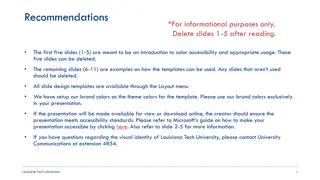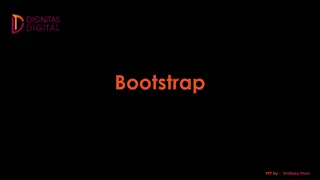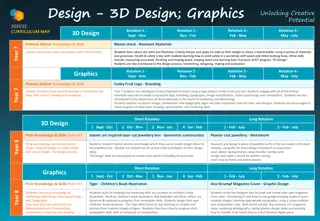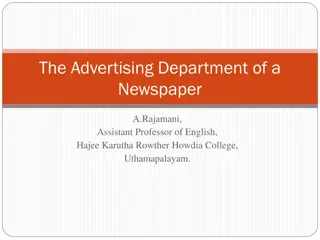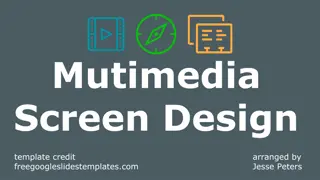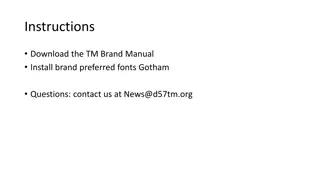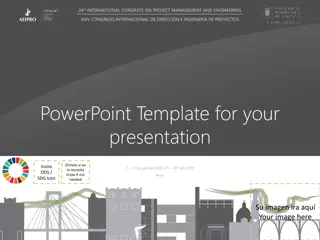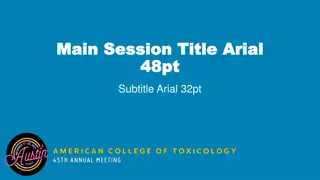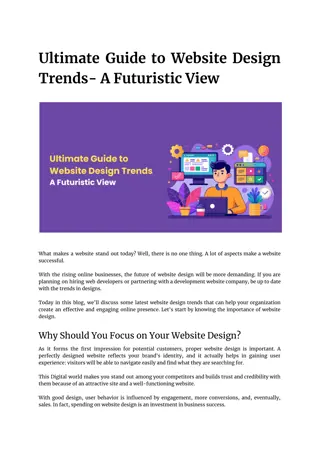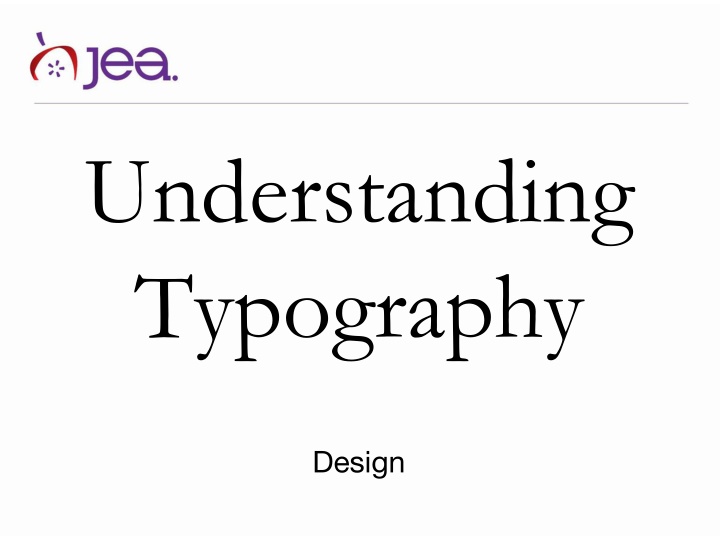
Exploring Typographic Design: Understanding Fonts and Alignments
"Dive into the world of typography design with a focus on font characteristics, type classification, and alignment options. Explore the differences between serif, sans serif, script, novelty, and square serif fonts. Learn about the importance of text alignment in design, including left, right, justified, and centered options. Enhance your understanding of typography for effective visual communication."
Download Presentation

Please find below an Image/Link to download the presentation.
The content on the website is provided AS IS for your information and personal use only. It may not be sold, licensed, or shared on other websites without obtaining consent from the author. If you encounter any issues during the download, it is possible that the publisher has removed the file from their server.
You are allowed to download the files provided on this website for personal or commercial use, subject to the condition that they are used lawfully. All files are the property of their respective owners.
The content on the website is provided AS IS for your information and personal use only. It may not be sold, licensed, or shared on other websites without obtaining consent from the author.
E N D
Presentation Transcript
Understanding Typography Design
Comparison Look at these two fonts for a minute. What are some differences you notice? 1.the font 2.the font
Type classification All typefaces are divided into different categories, also called races, and each race has a set of distinct characteristics. A race is a division of type that is based on the physical characteristics of a typeface. Common races are serif, sans serif, script and novelty. Other less common races include blackletter and square serif.
Serif Serif typography have curved strokes at the end of each straight line. Serifs are commonly used as body copy in print products because they are easier to read at smaller sizes. The extra curves at the edges of serif fonts are often called feet and flags.
Sans Serif Sans in Latin means without. In your mind, think about sans serif as being without feet and flags. Sans serif fonts do not have the finishing strokes found in serif typefaces. Sans serif fonts are used to contrast serif fonts.
Script Script typefaces imitate handwriting with letters flowing into each other.
Novelty Novelty faces are decorative typefaces which do not fit into any other category. Novelty typefaces should be used sparingly because they are often difficult to read.
Square Serif Also known as slab serif, square serifs are a trendier version of the popular serif race. They include large, block-like feet and flags positioned at the end of each straight line.
Type alignment There are four basic text alignment options: aligned left, aligned right, justified (with last line aligned left) or centered. In newspaper design: 1. News stories are generally justified. 2. Opinion stories, columns and editorials are left aligned. 3. Right alignment is generally only used in display type and captions. 4. Centered type isn t used all that often, but sometimes is used in feature design or type displays.
Measurements Inches: Traditional rule of measurement in the U.S. Picas and points: Traditional rule of measurement in print media design Picas and points are used in media design because it is easier to write, understand and communicate to others 1 inch = 6 picas 1 pica = 12 points 72 points = 1 inch Body copy size in print publications is generally 9-10 points size it all depends on the typeface used
Type formatting (typesetting) Leading: the space between lines of type. Generally, the leading for body copy is 2 points larger than the type size, e.g. 10/12 (type size is listed first, followed by leading size) Tracking: The overall spacing between all letters and words within a body of text. Generally body copy is generally tracked between -20 and +20 without harming the readability. Tight tracking would be anything - 25 or more. Loose tracking would be +25 or more. Kerning: the space between two individual letters. E.g. AE the amount of space between A & E can be increased (+), or decreased (-) to visually even out the space between individual letters in a word.
Type formatting Example: The below type sizes have been increased for on-screen instructional purposes, but the size difference between 9 point font size and 10 point font sizes are proportional.
Type formatting Auto leading is indicated in InDesign when the number is placed in parenthesis, e.g. (12) Scale: the horizontal and vertical scale of type can be altered to achieve a specific look or design, e.g. 90% horizontal scale would squeeze the type while a 120% vertical scale would stretch it
Type formatting Paragraph indent: Allows you to indent the first letter of each paragraph General paragraph indents in print media products are between p6 (half a pica) and 1p (one pica) Whenever there is a number followed by a p and then another number, the first number is picas and the second number following the p is points E.g. 6p11 would read six picas and eleven points
Type specifics X-height: the height (in points) of the lower-case letter x E.g. Type size is figured by measuring a typeface from the bottom of the descender to the top of the ascender. All typefaces are measured this way. Baseline: The invisible line which all type rests on Ascender: ligatures that extend above the x-height, e.g. h, t, l, etc. Descender: ligatures that extend below the baseline, e.g. j, y, p, etc.
Type examples Mixing type races and/or styles can add contrast and visual interest in headlines and display type Ex. All-caps paired with regular type Ex. Serif paired with sans serif Ex. Sans Serif paired with script Don t mix more than two typefaces in one display Readability should be the focus of every design decision Publications often use a serif typeface for body copy and a sans serif typeface for graphics and captions to add contrast and visual interest
Type examples Check out these examples of how display type is used and/or mixed to add contrast, interest and emphasis.



